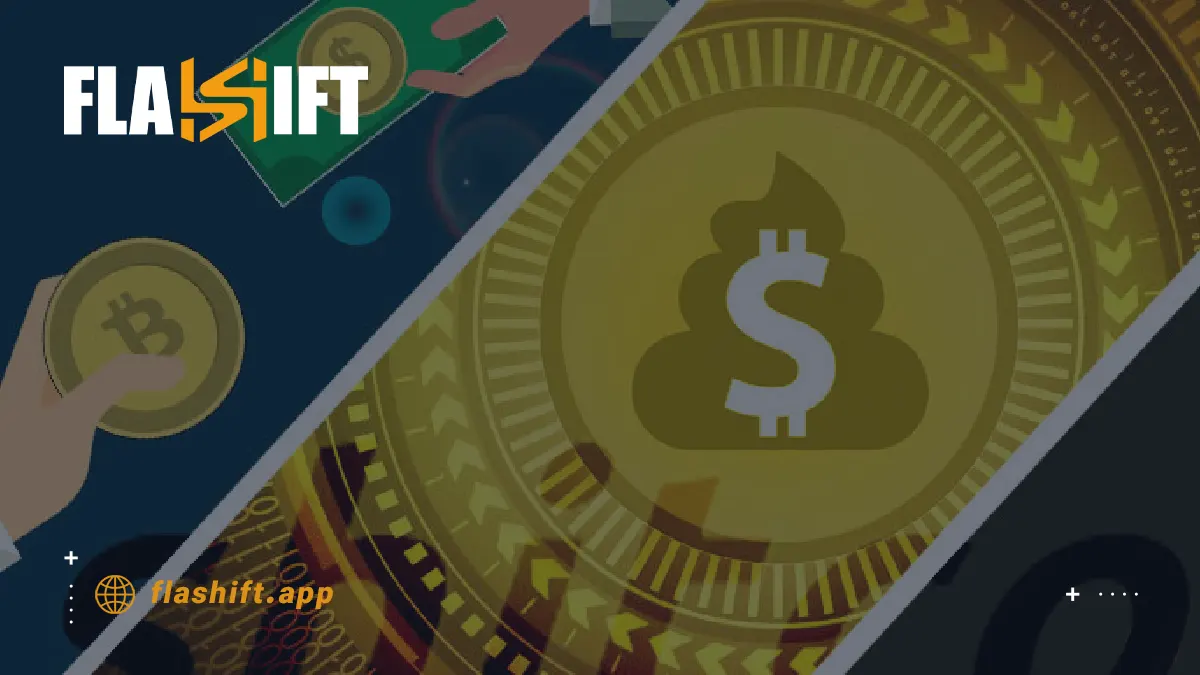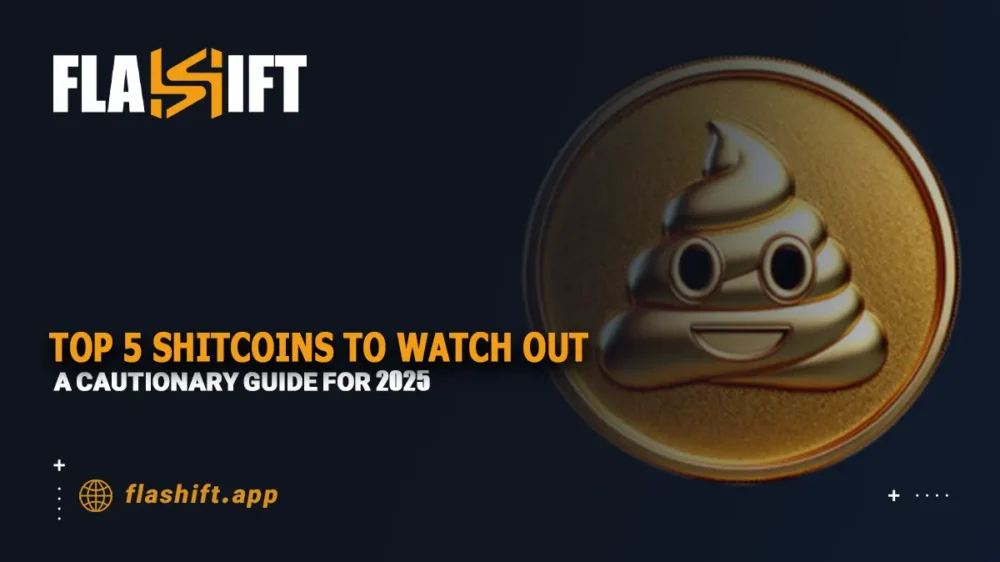The world of cryptocurrency is moving so fast, and among all the promising projects, markets are very often saturated with speculative assets, better known as shitcoins. While some of these coins could impress investors with fancy marketing and short-term gains, they usually lack substance, utility, or long-term viability. As 2025 approaches, staying on top of potential pitfalls with your investments is key.
In this cautionary guide, we go in-depth on the Top 5 Shitcoins to Watch Out for in 2025, showing you exactly why they’ve gained attention and the warning signs you should look out for. Whether you’re a seasoned trader or just a curious newcomer, this list will have you navigating the crypto landscape with a sharper eye and a healthy dose of skepticism. Stay vigilant-your wallet will thank you!
Navigating the 2025 Crypto Landscape
Entering 2025, the cryptocurrency market continues to evolve with rapid technological innovation, changing regulatory environments, and the emergence of new digital assets. While groundbreaking projects and disruptive technologies capture headlines, the growing number of speculative tokens, popularly referred to as shitcoins, is increasingly a problem for investors.
Understanding the dynamic nature of the crypto market in 2025 requires something more than just trend chasing: it demands a keen-eyed analysis and awareness of emerging risks. With thousands of tokens competing for attention, a clear distinction must be drawn between legitimate projects and those built on hype alone.
Understanding Shitcoins: Definition and Risks

The term shitcoin, in the context of cryptocurrency, refers to a digital asset that has little to no intrinsic value or utility. Most of them are based on weak technology, with no real-world use cases or long-term vision. Most shitcoins are created solely for speculative purposes, relying on aggressive marketing or the hype surrounding trends like meme culture to attract investors.
In 2025, such tokens are a big test for both advanced and beginner crypto investors. The risks of investing in shitcoins include:
- Lack of Utility: Many shitcoins offer no tangible value or use cases beyond speculative trading.
- Pump-and-Dump Schemes: These tokens are often manipulated by insiders who artificially inflate their value, only to sell off their holdings, leaving other investors at a loss.
- Unverified Teams: Shitcoin projects frequently lack transparency, with anonymous or unqualified developers behind the scenes.
- Market Volatility: Their prices are highly unstable, driven more by hype than by meaningful development or adoption.
Identifying a shitcoin involves careful scrutiny of a token’s whitepaper, team credentials, community engagement, and market behavior. By understanding the inherent risks and warning signs, investors can make more informed decisions and avoid falling victim to the pitfalls of speculative assets in the ever-evolving crypto market of 2025.
Criteria for Identifying Potential Shitcoins
As the crypto market keeps growing in 2025, so does the number of questionable tokens, more well-known as shitcoins, proliferate. Being in a position to shield your investments and avoid falling victim to scams requires an awareness of the common warning signs. Here are some signs that a cryptocurrency may be high-risk:
1. Lack of Utility
A primary red flag for identifying shitcoins is their lack of real-world use cases. Legitimate cryptocurrencies are built to solve specific problems or provide value within a blockchain ecosystem. Shitcoins, however, often exist solely for speculative trading, with no tangible benefits or functionality beyond hype.
2. Anonymous Development Teams
Transparency in a project’s leadership is crucial. Many shitcoins are launched by anonymous or unverifiable teams, making it difficult to assess their credibility or track record. A hidden team raises significant concerns about accountability and the long-term viability of the project.
3. Overhyped Marketing
Projects that prioritize flashy advertising over substantive development are often scams in disguise. Watch for aggressive social media campaigns, celebrity endorsements, or promises of guaranteed high returns—classic hallmarks of cryptocurrency scams and pump-and-dump schemes.
4. Unrealistic Promises
Be wary of tokens that claim to revolutionize the market without providing a clear roadmap or proof of concept. Overblown promises with little technical backing are a common tactic to lure unsuspecting investors.
5. Low Liquidity and Suspicious Trading Patterns
Many shitcoins exhibit erratic price movements and low trading volumes. These patterns can indicate price manipulation, where insiders inflate values artificially to cash out at the expense of other investors.
How to Protect Your Investments
To avoid falling victim to shitcoins in 2025, apply a disciplined approach to crypto investment risks:
- Conduct thorough research into the project’s whitepaper, team, and community.
- Focus on tokens with real utility and transparent development.
- Avoid investments driven purely by FOMO (fear of missing out).
Top 5 Shitcoins to Watch Out for in 2025: with Caution
As the cryptocurrency market expands in 2025, the number of tokens flooding the space continues to rise. Among these, certain coins exhibit classic traits of shitcoins, and investors must be wary of them. These tokens often lack utility, transparency, or a solid foundation, and they may be used primarily for speculation or manipulation. Here’s a detailed analysis of five specific tokens to approach with caution:
1. MemeX (MEX)
- Red Flags: MemeX is a classic meme coin with no real utility beyond viral trends. It thrives on social media hype, often driven by influencers or celebrity endorsements, making it a high-risk cryptocurrency. The project’s whitepaper is vague, and its development team is largely anonymous.
- Why Caution Is Needed: While meme coins can generate short-term profits, they are extremely volatile and lack the technical fundamentals of more established projects. MemeX’s primary function appears to be speculation, and its reliance on memes makes it susceptible to quick price fluctuations and pump-and-dump schemes.
2. GreenCoin (GRN)
- Red Flags: Despite its promise to “revolutionize green energy,” GreenCoin’s whitepaper offers minimal details on how the token plans to make an impact in the energy sector. The team is unverified, and there’s little engagement from credible partners or industry leaders.
- Why Caution Is Needed: GreenCoin’s overhyped environmental narrative is a classic tactic to attract eco-conscious investors. However, without any clear use case or proof of development, it’s likely another cryptocurrency scam aimed at exploiting a trending market for environmental sustainability.
3. FOMO Token (FOMO)
- Red Flags: As the name suggests, FOMO Token is built to capitalize on the fear of missing out. With no substantial technological innovation, its focus is entirely on creating a sense of urgency in potential investors. The marketing strategy is overly aggressive, promising unrealistic returns.
- Why Caution Is Needed: The token relies on emotional manipulation, which can lead to significant price manipulation and sudden crashes. Investor caution in crypto is crucial here, as FOMO Token has all the hallmarks of a pump-and-dump scheme. It’s driven by speculation rather than innovation or utility.
4. FutureCash (FCASH)
- Red Flags: FutureCash claims to be the next big thing in decentralized finance (DeFi) but lacks a clear technical infrastructure to support its claims. The project offers high staking rewards but doesn’t provide detailed information on how it generates these rewards or secures users’ funds.
- Why Caution Is Needed: Tokens like FutureCash prey on high-risk cryptocurrencies that promise outsized returns with minimal risk. However, the lack of transparency around the project’s mechanisms and its unclear backing make it a potential shitcoin that could leave investors exposed to liquidity risks and fraud.
5. ShibaBucks (SHIBK)
- Red Flags: A “copycat” token attempting to replicate the success of other meme coins like Shiba Inu and Dogecoin, ShibaBucks lacks any distinguishing features. Its marketing is filled with vague promises of becoming a “community-driven” token with little evidence of real adoption or a sustainable roadmap.
- Why Caution Is Needed: ShibaBucks rides the coattails of established meme coins but offers no genuine innovation. The anonymous team, lack of real-world use, and reliance on speculative trading make it a classic example of a shitcoin.
For crypto investors in 2025, it’s crucial to approach these tokens with caution. Always verify the legitimacy of a project, scrutinize its whitepaper, check for an active and transparent development team, and understand the token’s real-world utility before making any investments.
By identifying shady tokens early and understanding cryptocurrency scams, you can avoid the pitfalls associated with shitcoins and make more informed decisions about where to allocate your funds. Always practice investor caution in crypto—especially when it comes to high-risk projects with little to no value proposition.
Case Studies: Lessons from Past Shitcoin Failures
The history of cryptocurrency has been replete with horror stories of shitcoin failures, projects hyped into the sky only to crash and burn, taking with them a lot of investors’ money. Taking a closer look at failures from the past will also help us understand the dangers of high-risk cryptocurrencies while learning valuable lessons from what went wrong. A few examples are as follows:
1. BitPetite (BPT)
- Overview: BitPetite was marketed as a groundbreaking decentralized exchange (DEX) platform that would allow users to trade cryptocurrencies with low fees and enhanced security. The project had an initial coin offering (ICO) that raised millions of dollars, attracting a large investor base.
- Red Flags:
- The team behind BitPetite was anonymous, with no verifiable experience in the blockchain or cryptocurrency space.
- The whitepaper lacked technical detail, with most sections filled with vague statements about future features and “promised innovations.”
- The marketing campaign was incredibly aggressive, utilizing celebrity endorsements and social media influencers to push the ICO.
- The Fall:
- After the ICO, the development of the platform stalled, with little progress on the promised features. The liquidity pool dried up, and the token’s value plummeted.
- BitPetite was eventually exposed as a pump-and-dump scheme, where the creators dumped their tokens at artificially inflated prices, leaving investors with worthless assets.
- Lesson Learned:
- Always verify the development team’s credentials and ensure there is transparency regarding the project’s progress.
- Avoid investing in projects that rely on overhyped marketing rather than solid technical groundwork and a clear roadmap.
2. BitPet (BTP)
- Overview: BitPet was a token that aimed to bring blockchain technology to online pet care and pet services. It promised a decentralized ecosystem that would allow pet owners to access services like grooming, pet-sitting, and veterinary care using cryptocurrency.
- Red Flags:
- BitPet’s niche market (pet care) seemed odd for a cryptocurrency project, raising doubts about the project’s long-term viability and adoption.
- The whitepaper was filled with non-technical jargon, offering little clarity on how blockchain would actually benefit the pet care industry.
- The development team was largely unverified, with no clear experience in either blockchain technology or the pet care industry.
- The Fall:
- BitPet’s market capitalization grew rapidly in the beginning due to speculative interest and heavy marketing. However, the project failed to gain traction in the pet care industry, and its lack of a functional platform led to a rapid decline in value.
- The token’s liquidity also evaporated, and the project’s official channels were abandoned, leaving investors with nothing.
- Lesson Learned:
- Evaluate the token’s real-world utility before investing. A coin built around a niche, poorly understood market with no real use case is a red flag.
- Identifying shitcoins often involves questioning whether the project truly solves a problem or is merely riding the coattails of popular trends.
3. Titan Coin (TTN)
- Overview: Titan Coin was touted as a revolutionary project that would “take over the world of finance” by offering an ultra-fast, secure, and low-fee alternative to Bitcoin and Ethereum. It promised massive returns on early investment, drawing attention from both novice and experienced investors.
- Red Flags:
- Titan Coin’s whitepaper was riddled with bold, unsupported claims but lacked any solid technical details or explanations of how it would outperform major cryptocurrencies.
- There was little information about the team behind Titan Coin, and many members were either anonymous or had little experience in the blockchain industry.
- The project made grand promises without any substantial product development or working prototype.
- The Fall:
- Titan Coin experienced a dramatic rise in value due to aggressive marketing, but the project quickly unravelled when it was revealed that the team had been engaged in pump-and-dump tactics.
- The token’s value crashed once the initial hype faded, and the developers vanished, leaving investors with worthless tokens.
- Lesson Learned:
- Always scrutinize a project’s technical viability and assess whether it offers a true innovation or simply rides on hype.
- Be cautious of tokens that promise “get rich quick” returns without solid backing or proof of concept. These are often cryptocurrency scams in disguise.
4. PlusCoin (PCO)
- Overview: PlusCoin was designed to serve as a digital currency for online gaming and eSports. The project raised millions during its ICO, capitalizing on the explosive growth of the gaming industry and the growing interest in cryptocurrency.
- Red Flags:
- The platform was incredibly vague on its actual mechanics, offering little detail on how the cryptocurrency would be integrated into the gaming ecosystem.
- The team had no history in gaming or blockchain, raising questions about their ability to execute such a project.
- PlusCoin relied heavily on celebrity endorsements from eSports players and influencers to boost its profile, rather than focusing on developing a real product.
- The Fall:
- Despite initial interest, PlusCoin’s value crashed once it became clear that the project had no functional product and lacked serious partnerships with the gaming industry.
- After a series of failed promises, the development team went silent, and the project ultimately collapsed.
- Lesson Learned:
- Celebrity endorsements and flashy marketing are not substitutes for a solid product and technical innovation. Always look for real-world adoption and assess whether a project is truly solving a problem within its industry.
Final Thoughts
These shitcoin failures underscore the importance of due diligence in the cryptocurrency space. Always research a project’s whitepaper, evaluate the team’s credibility, and be skeptical of overhyped marketing strategies. By learning from past mistakes and applying critical thinking, you can better protect your investments and avoid falling prey to the many cryptocurrency scams that continue to surface in 2025. Investor caution in crypto is key—especially when dealing with speculative tokens that lack a solid foundation.
Protecting Your Investments: Best Practices

The cryptocurrency market can be lucrative but also highly volatile and prone to scams. Protecting your investments requires a disciplined approach, emphasizing due diligence, portfolio diversification, and staying informed about the latest trends and risks. Here follows a set of best practices for safeguarding your crypto assets in 2025:
1. Conduct Thorough Due Diligence
Before investing in any cryptocurrency, especially newer tokens, it’s crucial to conduct a detailed analysis. Here’s how you can ensure a thorough evaluation:
- Evaluate the Whitepaper: A legitimate project will have a clear, well-written whitepaper that outlines its goals, technology, use case, and roadmap. Look for transparency and detailed technical explanations.
- Verify the Team: Investigate the project’s developers and leadership. Do they have a credible track record in the cryptocurrency or blockchain space? Anonymous teams or unverified credentials are a red flag.
- Check the Community: A healthy, engaged community is often a good sign of a project’s legitimacy. Active discussions, transparent communication from the team, and genuine user feedback on platforms like Twitter, Reddit, and Telegram can provide valuable insights.
- Audit the Code: Some projects publish their code publicly for review. If available, consider having it audited by a third-party security firm to identify potential vulnerabilities or flaws.
2. Diversify Your Portfolio
One of the best ways to protect yourself from risks like shitcoins and cryptocurrency scams is to diversify your investments. Diversification reduces the potential for significant losses by spreading your investments across different assets. Here’s how to approach it:
- Mix Stablecoins and High-Risk Cryptocurrencies: While riskier cryptocurrencies can bring high rewards, they also expose you to greater volatility. Consider balancing your portfolio with more stable assets like Bitcoin (BTC), Ethereum (ETH), and stablecoins like USDT or DAI.
- Invest Across Sectors: The crypto market includes various sectors, such as DeFi (decentralized finance), NFTs, gaming, and layer-2 solutions. Spreading your investments across these sectors allows you to hedge against the failure of any one specific area.
- Use a Mix of Long-Term and Short-Term Strategies: Hold some tokens for the long term while trading others for short-term gains. Long-term holds tend to be less affected by market fluctuations, while short-term investments can offer quick returns (though they come with higher risks).
3. Stay Informed and Updated
The crypto market moves fast, and staying informed is crucial for making timely decisions. Here are some strategies to keep your knowledge up to date:
- Follow Credible Sources: Stay informed through reputable news websites, crypto analysts, and industry experts. Some popular sources include CoinDesk, CoinTelegraph, The Block, and Decrypt.
- Monitor Market Trends: Platforms like CoinMarketCap and CoinGecko can give you real-time insights into market trends, price movements, and token performance. Pay attention to the performance of specific assets, especially those that have caught the attention of investors or social media.
- Join Crypto Communities: Engage with communities on Reddit, Telegram, and Twitter. These platforms often give real-time updates on emerging trends and can help you identify potential risks or opportunities.
- Understand Regulatory Changes: Cryptocurrency regulation is still evolving. Stay informed about changes in local and global regulations, as they can impact the legality and performance of certain tokens.
4. Implement Risk Management Strategies
While it’s impossible to predict every market movement, implementing risk management strategies can help limit losses and protect your portfolio:
- Set Stop-Loss Orders: If you’re trading crypto, set stop-loss orders to automatically sell your assets if their price falls below a specific threshold. This can prevent you from holding onto tokens that are rapidly losing value.
- Only Invest What You Can Afford to Lose: The crypto market is highly volatile, and even the most promising assets can take a dive. Never invest more than you can afford to lose.
- Use Secure Wallets: Protect your investments by storing them in secure, reputable wallets. Hardware wallets like Ledger and Trezor are often considered the safest for long-term storage, while software wallets like MetaMask are great for easy access to decentralized applications (dApps).
- Stay Cautious of High-Yield Schemes: Be wary of tokens or platforms that promise unrealistically high returns. These are often associated with cryptocurrency scams or unsustainable tokenomics.
5. Learn from Past Failures
Learn from past shitcoin failures and crypto investment mistakes. Study the red flags and warning signs that led to significant investor losses, such as anonymous teams, lack of utility, aggressive marketing, and unrealistic promises. By doing so, you can better identify high-risk tokens and steer clear of potential scams.
6. Consider Professional Guidance
If you’re new to cryptocurrency or find the market overwhelming, consider seeking advice from a financial advisor or crypto consultant. Professional advice can provide valuable insights into diversification, portfolio management, and risk mitigation tailored to your financial goals.
What’s New for 2025: Emerging Trends & Investor Tips
As we move deeper into 2025, the landscape of shitcoins is evolving alongside the broader crypto market. AI-generated tokens, meme coins with celebrity backing, and projects tied to fleeting social trends are creating new risks for investors. Regulators are also beginning to focus more on the wild west of speculative assets, with potential crackdowns or more stringent listing requirements on centralized and decentralized exchanges. For investors, this means double-checking sources, staying updated on regulatory news, and focusing on transparency have never been more important. Consider setting up alerts for regulatory changes, monitoring project developer activity, and participating in reputable crypto communities for the latest red flags and warnings. Staying proactive and critical is the best defense in 2025’s unpredictable digital asset world.
Conclusion
Investing in the crypto market means that one should be quite proactive and informed. Conduct proper due diligence, diversify your portfolio to reduce risks, keep yourself abreast of market trends, and employ risk management techniques that could reduce the probability of large losses. With this in mind, best practices can be followed that would better enable one to maneuver through the highly volatile world of cryptocurrencies and avoid becoming the victim of shitcoins, among other crypto investment risks.
FAQ
1. What exactly is a shitcoin?
A shitcoin is a cryptocurrency with no real utility or long-term value, often driven by hype and speculation rather than substance.
2. Why should I be cautious about investing in shitcoins in 2025?
Shitcoins are high-risk and can lead to significant losses due to scams, volatility, and lack of real-world use or development.
3. How can I identify a shitcoin?
Look for red flags like no utility, anonymous teams, excessive marketing, and low liquidity or suspicious trading patterns.
4. What are the risks of investing in shitcoins?
Risks include high volatility, total loss of investment, manipulation, and lack of regulatory protection.
5. How can I protect myself from falling for shitcoins in 2025?
Conduct research, diversify your portfolio, stay informed, and be cautious of projects promising unrealistic returns.






